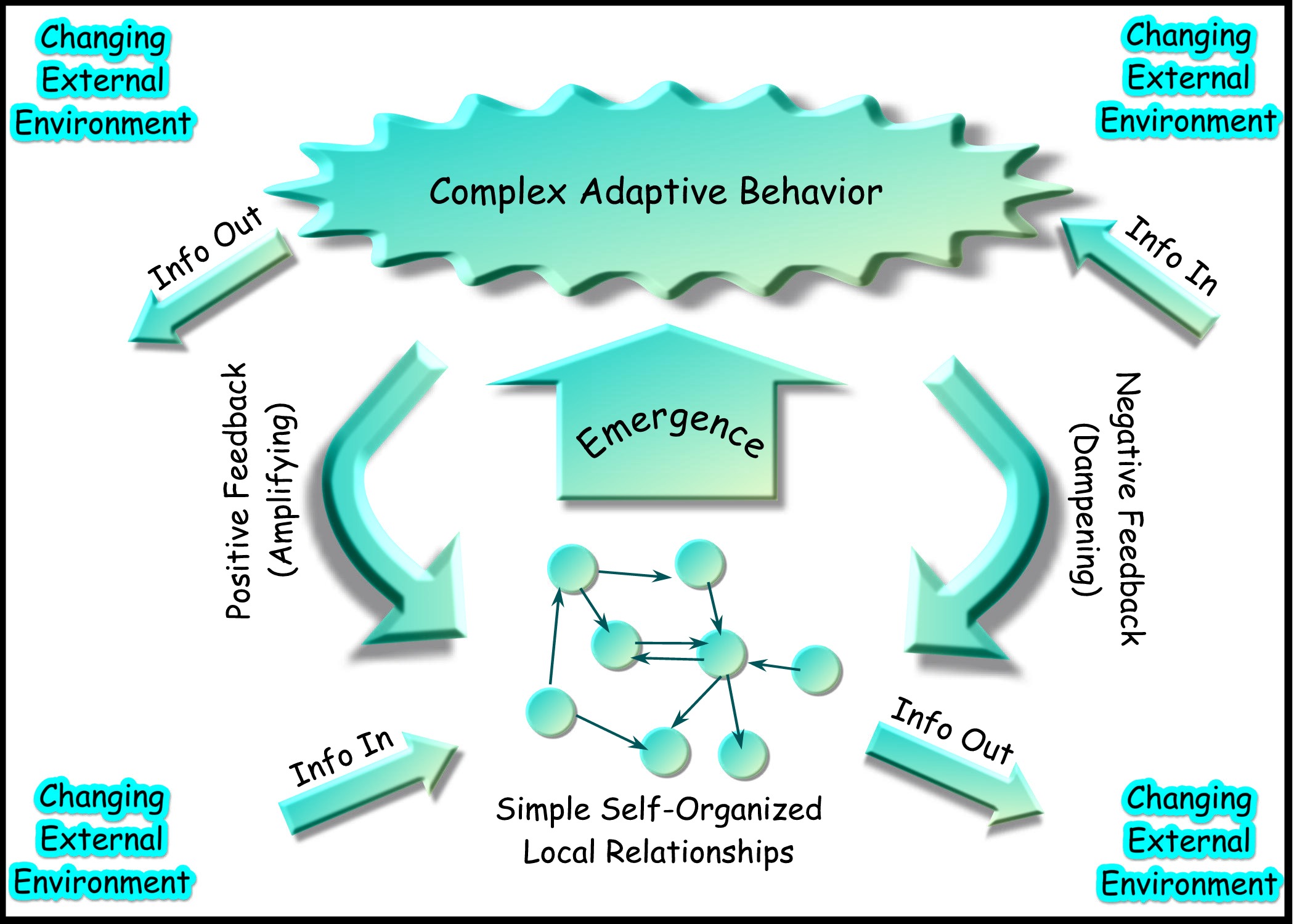Eigenschaft von hierarchisch strukturierten Systemen
Solche Systeme haben auf der Makroebene Eigenschaften, die auf der einfacheren Organisationsebene, der Mikroebene, nicht vorhanden sind. Sie entstehen durch synergetische Wechselwirkungen zwischen den Elementen auf der Mikroebene. Emergente Systeme sind zur Umformung fähig. Sie sind evolutionär und adaptiv, ihre Reaktionen sind nicht vollständig vorhersehbar. Sie weisen Störungen auf und können neue, höhere Komplexität hervorbringen.
Emergente Innovation, M. Pöschl
Das Konzept des fundamental neuen Wissens gilt als Resultat eines Prozesses, der als Emergente Innovation bezeichnet wird. Dieser Innovationsansatz verfolgt die Strategie, fundamental neues und doch zugleich organisch, aus dem Inneren heraus gewachsenes neues Wissen zu generieren, indem es das im Blick hat, was an neuem emergieren will.
The structure of invention, W. Brian Arthur
Invention is a process of linking some purpose or need with an effect that can be exploited to satisfy it. It may begin with a purpose or need for which existing methods are not satisfactory; this forces the seeking of a new principle (the idea of an effect in action). Or it may begin with a phenomenon or effect itself – usually a freshly discovered one – for which some associated principle of use suggests itself. Either way, translating this base principle into physical reality requires the creation of suitable working parts and supporting technologies. These raise their own challenges or problems, the solution of which may raise further challenges. As a result, invention is a recursive process: it repeats until each challenge or problem (and subproblem, and sub-subproblem) resolves itself into one that can be physically dealt with. It is challenging, usually lengthy, part-conceptual, and part-experimental.
